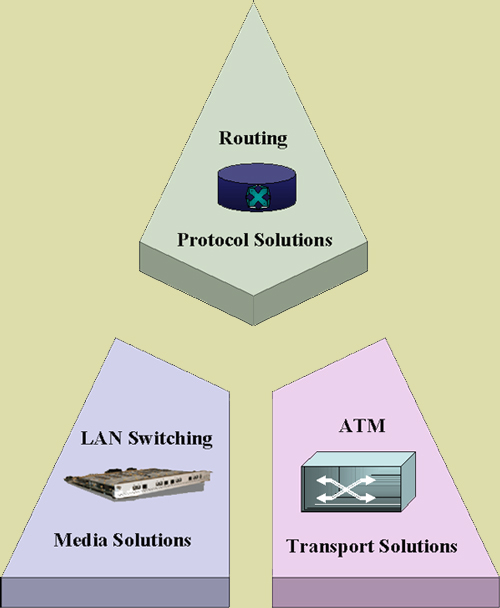
Major Problems Solved with Internetworking Devices
Background.
Three main types of problems to be confronted in internetworking design
can be categorized as
The decision to use routing, switching or some sort of ultra sophisticated transport approach such as ATM or Gigabit Ethernet can be loosely characterized in the following diagram. |

| Delay or Media
Problems. Media problems
refers to an excessive number of collisions in an Ethernet or a long wait
for the token in a Token Ring or FDDI. Media problems are usually
caused by having too many devices sharing the bandwidth of the transport
media. These problems are usually solved by dividing the LAN into
more segments using switches. In general, including and/or making better use of switches in a network results in the following advantages.
Protocol Problems. Protocol problems are usually caused by protocols that do not scale well or do not interact. These sorts of problems can be solved by either dividing some segments by routers to do things like limit broadcasts or using them to create interactions between stand alone segments. In general, including and/or making better use of routers in a network offers the following potential services.
Transport Problems. Transport problems are usually worst when the network is expected to provide voice and/or video services. Almost any latency will mess up the signals sufficiently. These sorts of solutions also require significantly more bandwidth. These are usually solved using Fast Ethernet or ATM. Cisco seems to be backing committing to the ATM approach, but doesn't preclude the use of Fast Ethernet. Switches Versus Routers. The following table, adapted from Teare, summarizes the issues associated with implementing switching versus routing. |
| Routers | Switches | |
| Problem Solved | Protocol problems |
|
| Key Features | Many including
|
Many including
|
|
Broadcast/Bandwidth Domains |
Reduce broadcast and bandwidth doamins | Reduces collision domains |